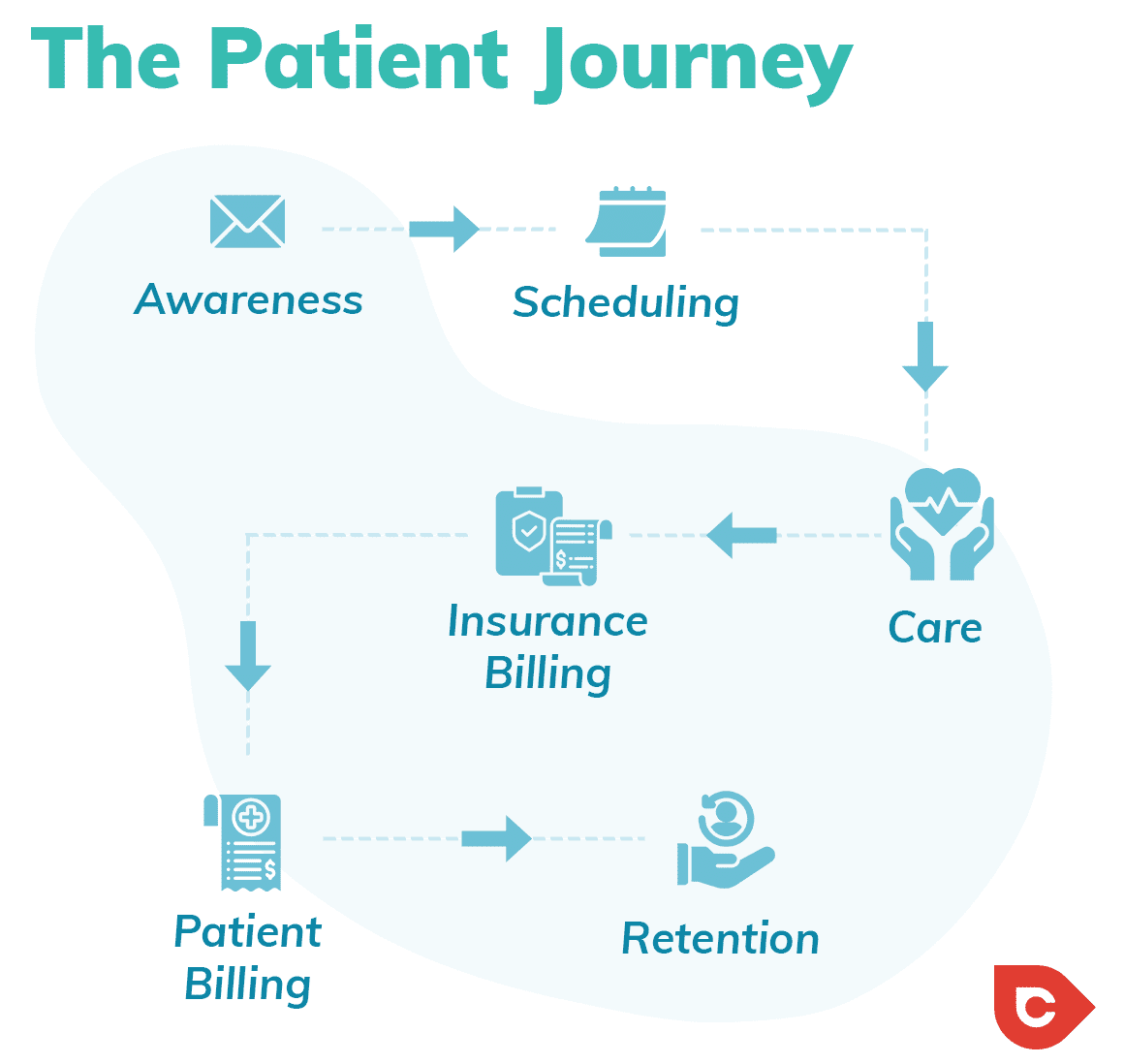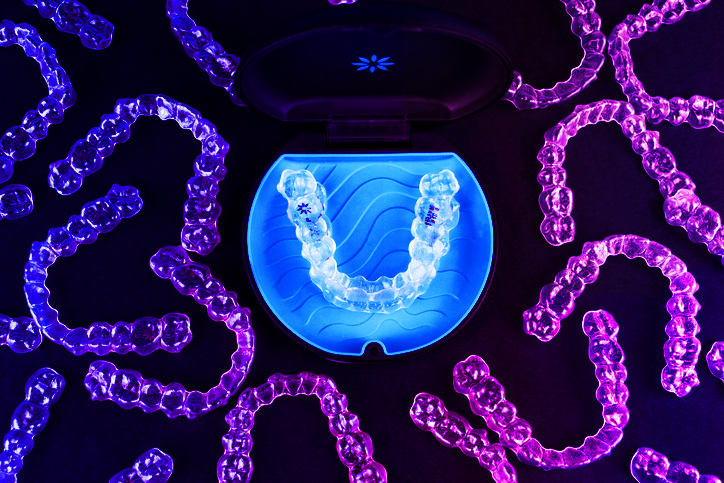You don’t need me to tell you that orthodontics aren’t bringing in the big numbers of new patients like they used to, because if you offer orthodontics, you already know that.
Table of Contents
With inflation continuing to, well, inflate, it’s really putting the squeeze on anyone whose income doesn’t vastly outpace their expenses. People are prioritizing the things like food and utilities that they need to live, while the “might be nice” and “maybe one day I should” categories (which include elective treatments like clear aligners) are being indefinitely delayed.
This in turn is really putting the bite on the dental industry, which is already a very competitive landscape where it’s hard to stand out and differentiate yourself. So how do you overcome those difficulties and put together an effective digital strategy to reach the right consumers and start getting back some of that sweet orthodontic patient acquisition?
Here are a few suggestions:
1. Build a Data-enabled Advertising Ecosystem
Before ramping up your advertising budgets, you need to invest time and resources in building a solid foundation of actionable data that will drive your campaigns.
You can even think of the data as an aligner for your marketing because it will continuously nudge your advertising where it needs to go and ensure that it grows in the right direction.
The first step is putting together an integrated call tracking and online booking platform. Those are your two biggest sources for valuable patient data, which will not only help you identify the higher-value leads (like clear aligner leads) but also give you the data you need to make the algorithms work for you.
Algorithms can only run off what you feed them. If you don’t tell them which leads converted into patients and how much that patient is worth, then the ad algorithms won’t be able to find more of the leads you want.
On the Ignite Healthcare Marketing Podcast, Amol Nirgudkar from Patient Prism digs into how call tracking informs advertising.
“We launched AdWords and Analytics integrations on top of the AI we built. We wanted to make sure that what we were sending to Google, whether it’s analytics or AdWords, was very accurate in terms of conversions. The AI knows that this patient called, they booked an appointment, they wanted an appointment for Invisalign, for example. That specific conversion can now be written back specifically into the conversion bucket called “Invisalign – website calls for mobile collector calls,” within ads or within your goals that are specifically for Invisalign.”
Keep in mind that it’s not good enough to just use any random call tracking and queryable reporting, because if you’re handling any PHI (Personally identifiable Health Information), then you’ve got to be HIPAA-compliant and sign a BAA with any company that will be handling the data for you.
There’s a lot to learn about how to put together a HIPAA-compliant marketing technology stack, but your easiest option is to use tools created specifically to capture quality signals with healthcare in mind:
- Patient Prism (call tracker)
- Liine (call tracker)
- Nexhealth (online booking platform)
2. Map The Patient’s Journey
To advertise to your patient, you have to know your patient. Understanding the motivations and behaviors of your ideal patient is the key to orthodontic patient acquisition (or really, any patient acquisition). That has to come first, so it can inform your keyword strategy, ad messaging, creative strategy, etc.
A lot of that knowledge is going to come from those call trackers, which is why they’re so important, but there are other ways to understand your patients, from surveys to online research. You’ve got to ask the big questions about the patients who might make the big purchases. Questions like:
- Who wants aligners?
- Why do they want them?
- Where are they going for info?
- What questions are they asking?
- What barriers are in their way?
Once you can answer all of these, you’ll have a much better idea of what keywords you should be using and what kind of messaging is most likely to be effective.

3. Capture Existing Demand with Revenue-based Bidding
One of the big mistakes I see a lot of practices make is to focus purely on maximizing the number of leads.
I’ve said it before and I’ll say it again: Not all dental leads are equal.
If a routine cleaning lead that pans out is going to bring you $100, and a clear aligner lead that pans out is going to bring you $3,000, you don’t have to be a finance whiz to figure out which of those leads is likely to be more valuable.
Your marketing should take that higher revenue potential into account when you’re trying to divvy up a limited advertising budget. And with a good call tracking solution like Patient Prism, you can even identify the callers who are interested in braces or aligners and then automagically send that data back to the ad platform so it can find similar users and use that data to guide your bidding strategy.
So how does all this relate to revenue-based bidding? And for that matter, what even is revenue-based bidding? Basically, it means not treating all leads as equal, but focusing on the revenue that you’ll bring in from a successful conversion. So if clear aligner leads that convert bring in 30x the revenue of routine cleaning leads, you should be willing to pay more for that category of leads.
Now, this doesn’t mean you should run out and immediately start spending 30x as much on those leads. You’ve got to be smart about where you use revenue-based bidding, and the best place to start is with leads that have a high chance of conversion. That means aiming specifically for high-intent leads who are ready to book, so with revenue-based bidding you want to:
- Target your campaign at the bottom of the funnel
- Focus on patients who have a high intent to book an appointment now
- Focus on bottom-funnel, conversion-ready keywords like “orthodontist near me”
4. Use Geographical Data to Target Campaigns
Have I mentioned all leads aren’t equal? Well, all neighborhoods also aren’t equal, which you probably know if you’ve ever looked for a place to live. And these differences have a direct effect on relevance to your business:
- Affluent neighborhoods are more likely to have income for elective healthcare expenditures
- Family-centric neighborhoods are more likely to have children who might need orthodontic work
- Neighborhoods of younger struggling singles won’t drive as much ortho traffic
You have existing patient data, so crunch that data to figure out which zip codes and services are generating the most revenue, and target accordingly. If you’re getting the bulk of your clear aligner leads from two zip codes, you probably want to allocate a larger portion of your budget there, while allocating a more moderate budget to maintain a presence in lower-performing areas.
And don’t hesitate to create separate campaigns for high-performing zip codes or zip codes that have generated a lot of revenue for a particular service.
5. Build Demand for Clear Aligners & Expand Pipeline of Potential Patients
Currently, there is a low demand for braces, and the search volume for clear aligners is even lower.
Once you’ve optimized your performance at the bottom of the funnel, if you still want to generate more clear aligner leads, you’ll need to expand up the funnel to catch people earlier along their patient journey.
This is where full-funnel marketing really shines, educating people and influencing them early on to generate awareness and demand. You want to reach these new audiences and tap into their motivations, developing compelling content to get them to consider orthodontic treatments, especially because many of them don’t even know what aligners are.
Put together some strong messaging to show them why they should be interested in clear aligners:
- No one can see them
- Affordable compared to traditional braces
- Get the smile you’ve always wanted
You need to break through the noise and motivate them to learn more—and this holds true for everything from dental implants to surgical procedures that help with TMJ. Upper funnel education is how you widen the pipeline, and it takes time, but it will pay off with more orthodontic patient acquisition.
In Conclusion
This may seem complicated, but it’s really all about using the data you have to focus on high-quality leads that are most likely to drive big revenue.
If you’re hyperfocused on cost per lead (CPL), you’ll miss out on leads that are more likely to convert into actual patients and net new patients with a higher lifetime value.
And of course, if you need any help in putting together effective full-funnel marketing, you can always drop us a line.

